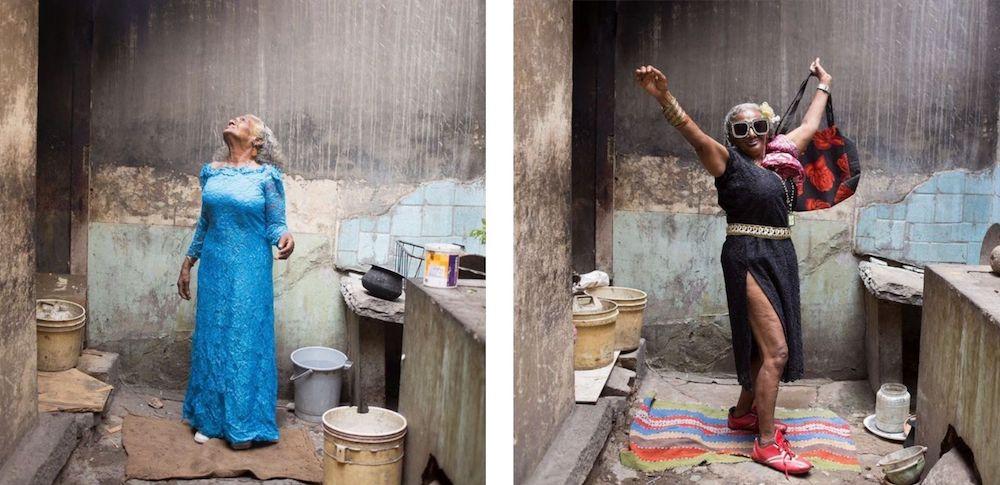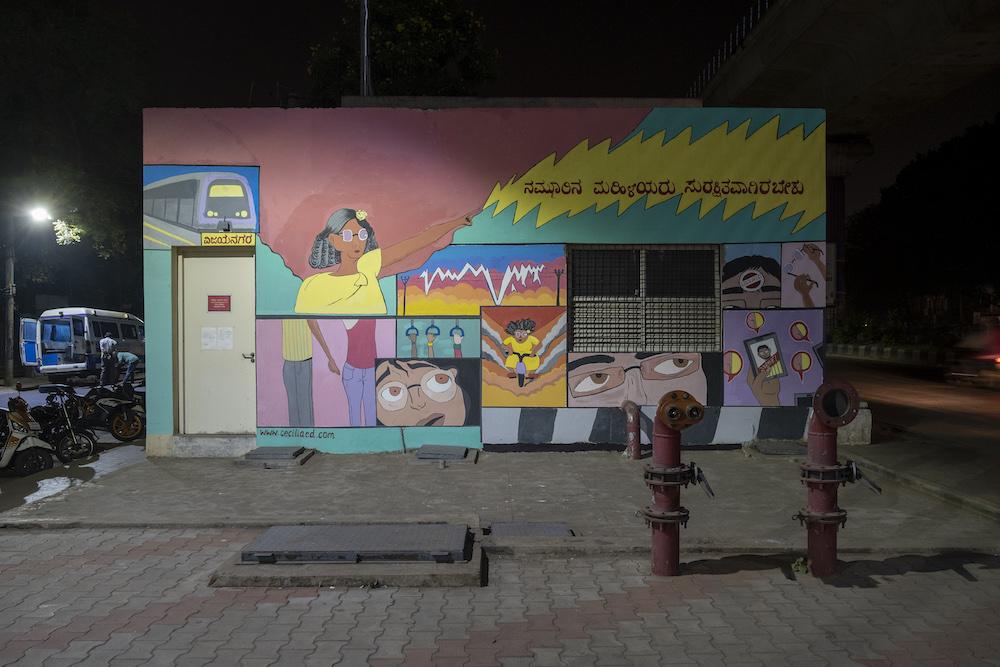Making of a Local Icon: Indu Antony’s Feminist Public Art Project Cecilia’ed
First “street re-opening” ceremony conducted as part of the Cecilia’ed project at Hennur Bellary Road (HBR) Layout. (Photograph by Joseph MVJC Studio. Bengaluru, 26 July 2019. Image courtesy of the artist and FICA.)
Cecilia’ed, a multifaceted public art project by Indu Antony, manifested as a year-long programme of community events around the concerns of women’s safety in urban India. Cecilia’ed was supported by a Public Art Grant from the Foundation for Indian Contemporary Art (FICA), which aims to generate interest in public art in India by enabling diverse, site specific projects.

Photograph from the Series 70+ Shades of Cecilia. (Bengaluru, 2019. Image courtesy of the artist and FICA.)

Photograph from the Series 70+ Shades of Cecilia. (Bengaluru, 2019. Image courtesy of the artist and FICA.)
Taking Cecilia, a resident of Vasant Nagar, Bengaluru as its inspiration, the project attempted to transform her into a celebrity (locally as well as online) through iconic portraits, posters and ceremonies, in order to generate engagement and awareness around issues of gender-based violence and sexuality.
In a telephonic interview with the artist, Antony talked about living in middle class neighbourhoods and being harassed on the streets or judged by other residents for living as an independent woman:
“...at that time I was thinking about how it is unsafe to walk in certain areas of Bengaluru, and I was reading quite a bit about feminist geography—how certain areas are built for men. For example, the hardware shop would have a barber shop next to it, and then there would be a paint shop and so public areas were largely masculine... I was also looking at celebrity culture and a kind of ‘herd mentality’ around it which is quite popular here and that is when the project started with Cecilia.”

Lithoprint poster (left) and safety matches (right) produced as collectibles for the Cecilia’ed project. (Bengaluru, 2019. Images courtesy of the artist and FICA.)
This project also culminated in a series of more than a hundred striking portraits of Cecilia. The artist emphasised how Cecilia insisted on doing her own styling and make-up for these photographs, often piecing together bold outfits with props she found on the street. It appears that Cecilia was, in some ways, a celebrity in waiting—to be discovered, photographed and celebrated. These photographs were then printed on posters made for special “street re-opening” ceremonies for which Cecilia was invited as a chief guest. These public events which Antony called “street re-openings,” were done for particular roads in the neighbourhoods surrounding Vasant Nagar that were previously marked as “unsafe” for women because of a history of harassment, attacks and reported crimes. Through the performative reclamation of these streets, the project engaged the local community as spectators and participants and hoped to generate conversations around these publicly accepted forms of gender-based violence. As a part of this project, Antony also conducted safety awareness workshops in the local anganwadi school, working with municipal authorities, police personnel and school staff to generate awareness about women’s safety.
In a telephone conversation, Antony pointed out that it was important for her to integrate the project within the neighbourhood by engaging with various local professionals—a photographer, a news agency, flower vendors and a printing shop among others, so that the aesthetic and visual dimensions of the project also developed in a style rooted in the neighbourhood.

A mural inspired by Cecilia was designed by students of the Srishti Institute of Art, Design and Technology as a part of their public art project, Art in Transit. The mural was created by various members of the local community and friends of the project at the Vijayanagar Metro Station. (Bengaluru, 2019. Image courtesy of the artist and FICA.)
While initiating many urgent conversations around public spaces and gender in urban India, Cecilia’ed runs the risk of becoming a standalone art project embedded in a complex network of negotiations which define the landscape of gender relations in public and private life in urban India.
All images from the project Cecilia’ed by Indu Antony.




